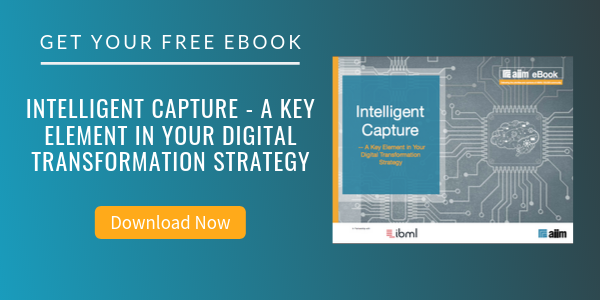
The Hidden Benefits of the Digital Mailroom
Capture and Imaging | Paperless Office
The concept of a digital mailroom has been around a while. The idea is pretty simple - all incoming mail is scanned on entry and delivered electronically to the appropriate department or process.
In reality, only mail with business value is likely to be processed. This will predominantly be documents with a structure such as forms, orders, invoices, delivery dockets, and vouchers.
In many situations, particularly in consumer or citizen-facing businesses, it will also include handwritten letters, application forms, change of details, supporting certificates, etc. Circulars, brochures, magazines, and junk-mail will not be scanned.
Although scan-to-archive may be part of the operational sequence, capture-to-process is the core technology. The steps for capture-to-process include:
- Recognize and extract useful data from the document or form
- Validate it against a customer name or transactional data within the enterprise back-office systems
- Route it to the appropriate department
- Trigger a workflow to start the process
Why Choose a Digital Mailroom Strategy?
There are some obvious tangible benefits from replacing physical mail handling with electronic distribution, including:
- Reduced document storage space,
- Fewer file cabinets,
- Less photocopying, etc.
Perhaps the more important benefits of the Digital Mailroom are the not-so-obvious ones that are consistently found in AIIM surveys on this topic. These important hidden benefits include:
- Improved searchability of business documents
- Improve shareability of business documents
- Easier audibility and compliance
- Enablement of remote working
Another strong factor that is particularly relevant to the digital mailroom application is improved customer service due to the immediate accessibility of incoming correspondence. This is particularly important in government, financial services, utility, and legal sectors. The faster initiation and better tracking of downstream processes such as customer inquiries, new applications, claims, account opening, citizen returns, etc. help meet response targets, improves quality, and raises process productivity.
Steps for A Digital Mailroom Implementation
Step One: Assemble Your Team
A digital mailroom implementation should be managed as a business change project, not just a mailroom replacement. The project team should include:
- Facilities Management
- Line-of-Business Owners
- Records Managers
- IT Department
Step Two: Build Your Business Case
Then build a business case based on the likely improvement to process productivity and the savings in physical storage space. Add the less tangible benefit of shared enterprise-wide access to electronically stored documents and customer service improvements from timely availability of inbound correspondence. Consider whether the rationalization of your mail delivery locations would increase the volume through the digital mailroom. This will improve amortization, although it may also put additional demands on turnaround time for daily mail deliveries.
Step Three: Assess and Compare Solutions
When comparing solutions, be sure to carry out a careful evaluation of core recognition performance as this will affect throughput, process quality, and extended application flexibility.
- Benchmark solutions for yourself on your own typical materials and relate these to 3rd-party comparator reports.
- Be particularly careful if handwriting recognition is important to you.
- >Reference other users with regard to integration with your specific brand of ERP, CRM, and Finance system.
- Do not under-specify your system to save money - AIIM surveys show that most users achieve ROI from new system implementations within 18 months.
- The broader the applicability of your system, the more processes you will be able to capture-enable, and the greater your returns will be.
Step 4: Check Out Our Discussion on the Digital Mailroom
Hear an informative discussion about the Digital Mailroom with this webinar on-demand: Cut Paper Mail Off at the Pass - How Digital Mailroom Services Transform Your Organization to the New Normal of Remote Working.
Connecting the Dots for Your Digital Transformation
The mailroom is a unique source of paper in your organization - it's generated externally and often beyond your organization's ability to control it. As efforts continue to reduce the amount of paper-driven processes in the workplace, cutting paper-based correspondence off at the pass will have a significant impact on your organization. Follow the best practices outlined in this post to turn your paper mail digital, connect it to downstream processes, and bring significant ROI improvements and customer satisfaction benefits to your organization.



